History originally published in AutoWeek September 24, 2001
Allied bombing had done its best to destroy the ability of the Third Reich to wage war. Mercedes-Benz, according to estimates made in the spring of 1945, suffered about 70 percent damage to his automobile assembly plant at Untertürkheim and 85 percent to the coachbuilding facility at nearby Sindelfingen. So little was left of the aero engine plant in Berlin-Mariendfelde that the remains were pulled down. Saiod a brief statement by the board of directors: “Daimler-Benz had ceased to exist in 1945.”
Fortunately for Daimler-Benz, however, the Untertürkheim and Sindelfingen plants and truck factories at Manheim were all in the American zone. The rubble was cleared and vehicle repair occupied as many of the much prewar staff that could be recalled. Currency reform in June 1948 and the Marshall Plan boosted German economy, and Daimler-Benz began actual automobile manufacture within three years of the war’s end.
Not surprisingly, the first car was a prewar design. The 170V had been introduced in 1935, a 1.7-liter four-cylinder development of the 1.7-liter six-cylinder 170 that debuted in 1931. It had been Daimler-Benz’s first venture into the “cheap car” market, and it sold quite well in the shadow of the mighty 500K in the 540K, and in truth, paid the bills.
The 170V was one of the few Mercedes for which tooling remained intact, and for the struggling German economy, it was the only one that made sense to build. It was old-fashioned, with its upright radiator shell, separate fenders and freestanding headlamps, but it also had advanced features such as fully independent suspension. True, the rear suspension was the now-mailgned swing-arm arrangement, but it was advanced for the era. During 1949, Daimler-Benz found even more power for the 1767-cc side-valve four, raising the compression ratio of the 6.5:1 for 52 horsepower. The transverse leaf front suspension was replaced by double A-rm/coil spring system similar to that of the 1937-39 Mercedes Grand Prix cars. These changes warranted a new name: 170S.
Although foreign car impresario Max Hoffman was Mercedes-Benz importer for the United States in the early ‘50s, a number of cars were imported privately, many by American servicemen returning from overseas duty. How the 1951 170S Cabriolet now owned by Hans and Elizabeth Bleuel of Greenwich, Connecticut, came to America is lost to history, however. The car had been wholly restored by Elizabeth’s father, Dominic Alampi, owner of Empire Auto Body of Port Chester, New York, about a dozen years ago and was recently given to the newlyweds as a wedding gift.
Although modern replacements for the prewar design of the 170S were already on the drawing board, there’s no denying the trim and elegant design of the budget Benz. Driving matches the look. The steering is not at all heavy for an unboosted system, nor does the ratio seem excessively slow. The fully synchronized four-speed gearbox is light to the touch, with reverse up to the right. The shift lever is long, angling out from under the dash, but easy to move from gear to gear. Beautiful woodwork frames of windshield and dash top and surrounds the Becker radio centered on the dash. The front seats are comfortable chairs. The backseat is proof the Germans have a sense of humor; the cushion is adequate, but there’s virtually no legroom, despite the 170D’s 112-inch wheelbase.
The engine runs quietly, though with 2690 pounds (dry) to cart about, it’s no fireball. A four-door sedan tested by Road & Track in 1952 ran the quarter-mile in 12.5 seconds, by which time it hadn’t broken 60 mph. On the other hand, the owner’s manual lists both maximum speed and cruising speed at 75 mph.
The Bluel’s cabrio is just as happy to cruise with its top folded back on the summer’s evening, and all the happier for the Marshall Plan, and the Allied bonds than missed the tooling for the 170S.




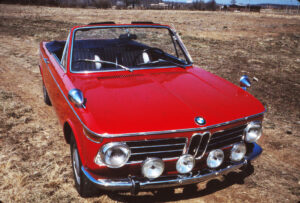
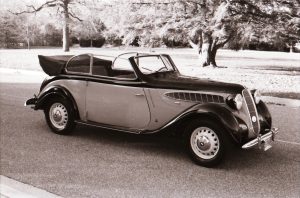
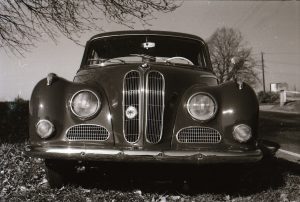
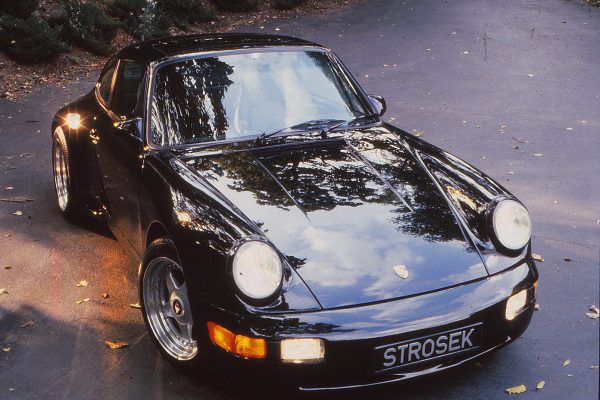
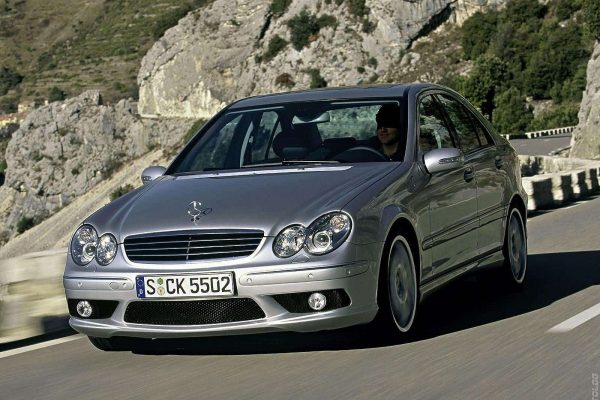
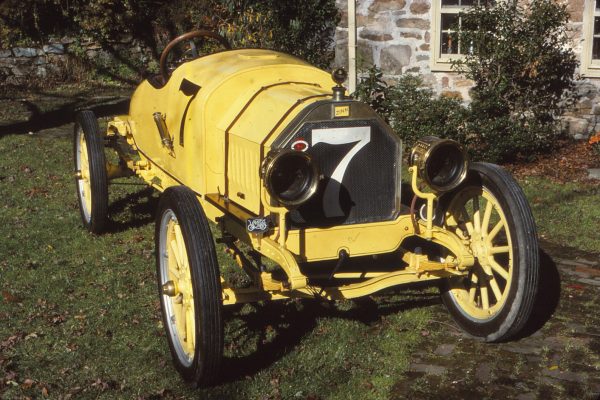
What Do You Think?
You must be logged in to post a comment.